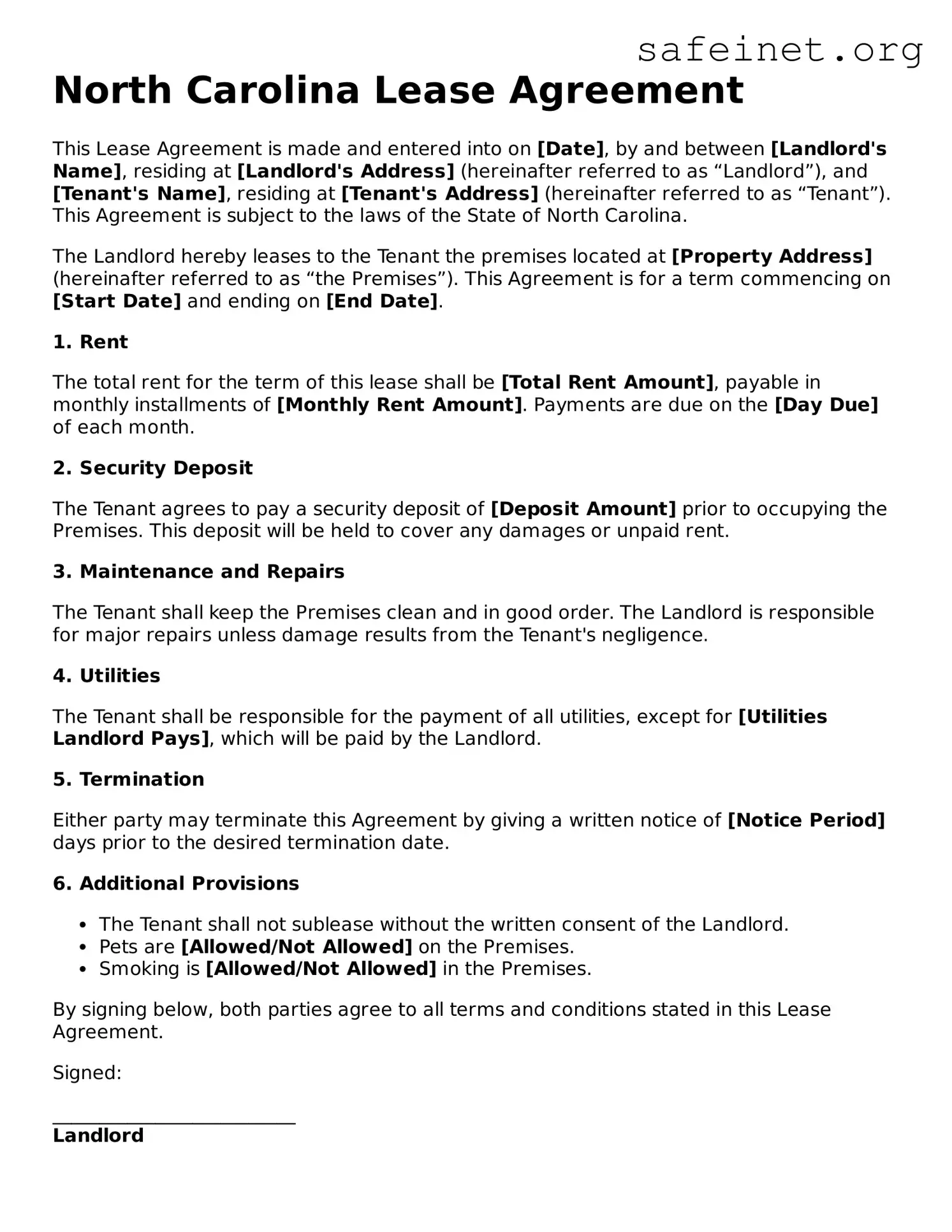North Carolina Lease Agreement
This Lease Agreement is made and entered into on [Date], by and between [Landlord's Name], residing at [Landlord's Address] (hereinafter referred to as “Landlord”), and [Tenant's Name], residing at [Tenant's Address] (hereinafter referred to as “Tenant”). This Agreement is subject to the laws of the State of North Carolina.
The Landlord hereby leases to the Tenant the premises located at [Property Address] (hereinafter referred to as “the Premises”). This Agreement is for a term commencing on [Start Date] and ending on [End Date].
1. Rent
The total rent for the term of this lease shall be [Total Rent Amount], payable in monthly installments of [Monthly Rent Amount]. Payments are due on the [Day Due] of each month.
2. Security Deposit
The Tenant agrees to pay a security deposit of [Deposit Amount] prior to occupying the Premises. This deposit will be held to cover any damages or unpaid rent.
3. Maintenance and Repairs
The Tenant shall keep the Premises clean and in good order. The Landlord is responsible for major repairs unless damage results from the Tenant's negligence.
4. Utilities
The Tenant shall be responsible for the payment of all utilities, except for [Utilities Landlord Pays], which will be paid by the Landlord.
5. Termination
Either party may terminate this Agreement by giving a written notice of [Notice Period] days prior to the desired termination date.
6. Additional Provisions
- The Tenant shall not sublease without the written consent of the Landlord.
- Pets are [Allowed/Not Allowed] on the Premises.
- Smoking is [Allowed/Not Allowed] in the Premises.
By signing below, both parties agree to all terms and conditions stated in this Lease Agreement.
Signed:
__________________________
Landlord
__________________________
Tenant
